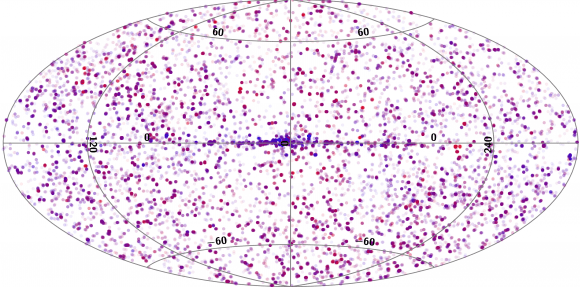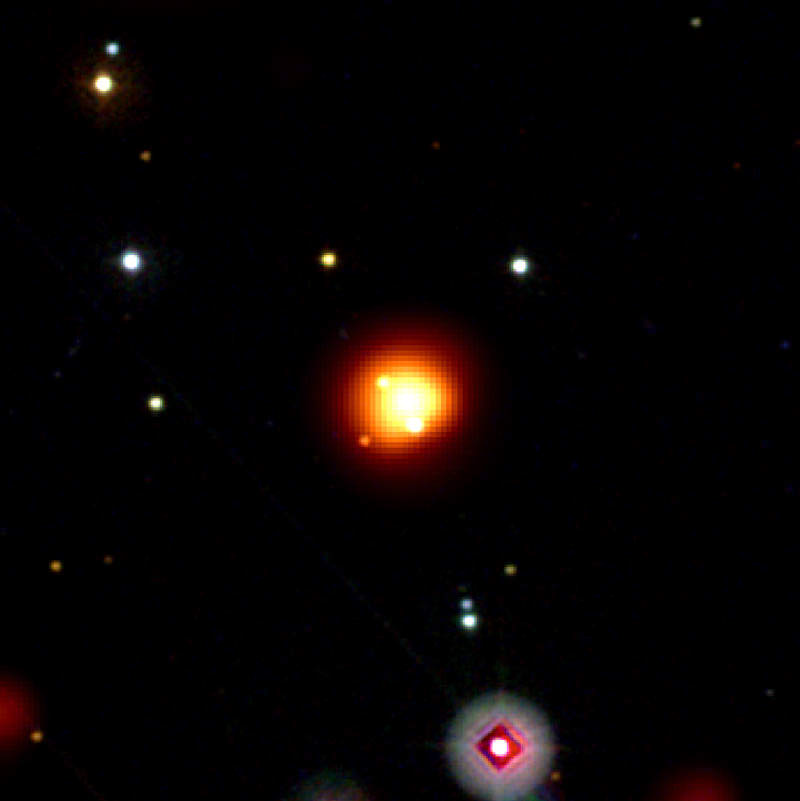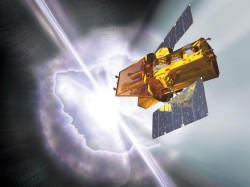The mystery of the northern lights – aurora – spans time beyond history and to cultures of both the southern and northern hemispheres. The mystery involves the lights, fantastic patterns and mystical changes. Ancient men and women stood huddled under them wondering what it meant. Was it messages from the gods, the spirits of loved ones, warnings or messages to comfort their souls?
Aurora reside literally at the edge of space. While we know the basics and even more, we are still learning. A new published work has just added to our understanding by explaining how one type of aurora – the Theta Aurora – is created from the interaction of the charged particles, electric and magnetic fields surrounding the Earth. Their conclusions required the coordination of simultaneous observations of two missions.
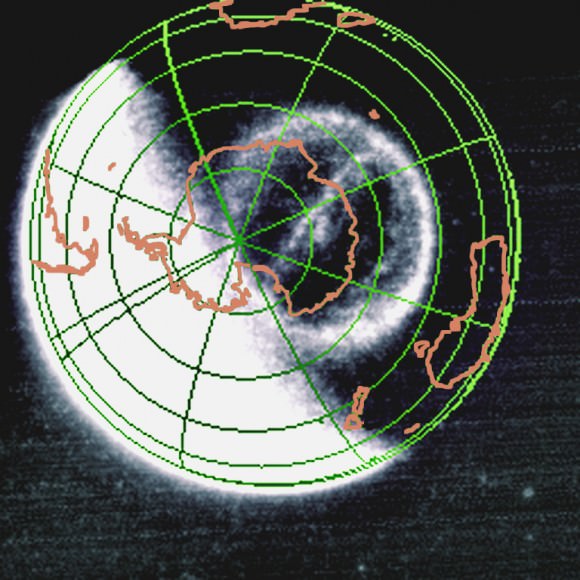
We were not aware of Thetas until the advent of the space age and our peering back at Earth. They cannot be recognized from the ground. The auroras that bystanders see from locales such as Norway or New Zealand are just arcs and subsets of the bigger picture which is the auroral ovals atop the polar regions of the Earth. Ground based all-sky cameras and polar orbiting probes had seen what were deemed “polar cap arcs.” However, it was a spacecraft Dynamics Explorer I (DE-1) that was the first to make global images of the auroral ovals and observed the first “transpolar arcs”, that is, the Theta aurora.
They are named Theta after the Greek letter that they resemble. Thetas are uncommon and do not persist long. Early on in the exploration of this phenomenon, researchers have been aware that they occur when the Sun’s magnetic field, called the Interplanetary Magnetic Field (IMF) turns northward. Most of the time the IMF in the vicinity of the Earth points south. It is a critical aspect of the Sun-Earth interaction. The southerly pointing field is able to dovetail readily with the normal direction of the Earth’s magnetic field. The northward IMF interacting with the Earth’s field is similar to two bar magnets turned head to head, repelling each other. When the IMF flips northward locally, a convolution takes place that will, at times, but not always, produce a Theta aurora.
A group of researchers led by Dr. Robert Fear from the Department of Physics & Astronomy, University of Leicester, through analysis of simultaneous spacecraft observations, has identified how the particles and fields interact to produce Theta aurora. Their study, “Direct observation of closed magnetic flux trapped in the high-latitude magnetosphere” in the Journal Science (December 19, 2014, Vol 346) utilized a combination of data from ESA’s Cluster spacecraft mission and the IMAGE spacecraft of NASA. The specific event in the Earth’s magnetosphere on September 15, 2005 was observed simultaneously by the spacecraft of both missions.
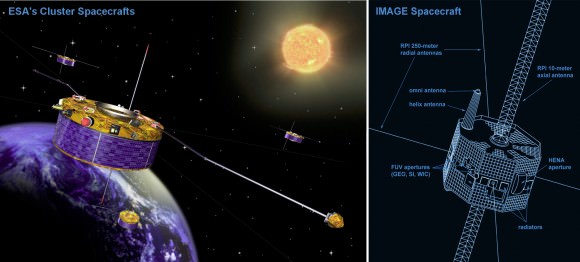
Due to the complexity of the Sun-Earth relationship involving neutral and charged particles and electric and magnetic fields, space scientists have long attempted to make simultaneous measurements with multiple spacecraft. ISEE-1, 2 and 3 were one early attempt. Another was the Dynamics Explorer 1 & 2 spacecraft. DE-2 was in a low orbit while DE-1 was in an elongated orbit taking it deeper into the magnetosphere. At times, the pair would align on the same magnetic field lines. The field lines are like rails that guide the charged particles from far out in the magneto-tail to all the way down to the upper atmosphere – the ionosphere. Placing two or more spacecraft on the same field lines presented the means of making coordinated observations of the same event. Dr. Fear and colleagues analyzed data when ESA’s Cluster resided in the southern lobe of the magnetotail and NASA’s IMAGE (Imager for Magnetopause-to-Aurora Global Exploration) spacecraft resided above the south polar region of the Earth.
Cluster is a set of four spacecraft, still in operation after 14 years. Together with IMAGE, five craft were observing the event. Fear, et al utilized ESA spacecraft Cluster 1 (of four) and NASA’s IMAGE. On that fateful day, the IMF turned north. As described in Dr. Fear’s paper, on that day, the north and south lobes of the magnetosphere were closed. The magnetic field lines of the lobes were separated from the Solar wind and IMF due to what is called magnetic reconnection. The following diagram shows how complex Earth’s magnetosphere is; with regions such as the bow shock, magnetopause, cusps, magnetotail, particle belts and the lobes.
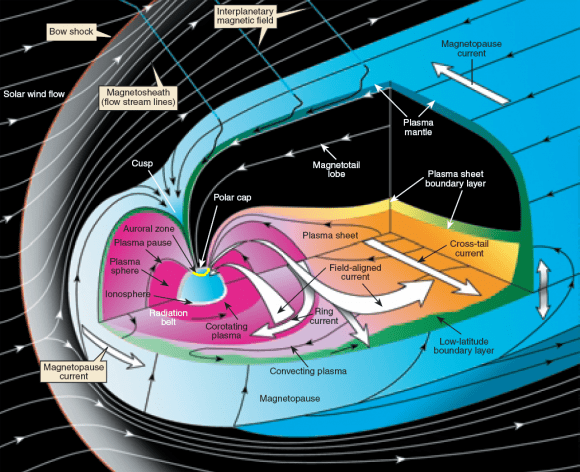
The science paper explains that what was previously observed by only lower altitude spacecraft was captured by Cluster within the magnetotail lobes. The southerly lobe’s plasma – ionized particles – was very energetic. The measurements revealed that the southern lobe of the magnetotail was acting as a bottle and the particles were bouncing between two magnetic mirrors, that is, the lobes were close due to reconnection. The particles were highly energetic.
The presence of what is called a double loss cone signature in the electron energy distribution was a clear indicator that the particles were trapped and oscillating between mirror points. The consequences for the Earth’s ionosphere was that highly energetic particles flooded down the field lines from the lobes and impacted the upper atmosphere transferring their energy and causing the magnificent light show that we know as the Northern Lights (or Southern) in the form of a Theta Auroral Oval. This strong evidence supports the theory that Theta aurora are produced by energized particles from within closed field lines and not by energetic particles directly from the Solar Wind that find a path into the magnetosphere and reach the upper atmosphere of the Earth.
![A video of an observed major geomagnetic storm (July 15, 2000) taken by the Far Ultraviolet Imaging System (FUV) on IMAGE. IMAGE operated from 2000 to December 2005 when communications were lost. (Credit: NASA/SWRI) [click to view the animated gif]](https://www.universetoday.com/wp-content/uploads/2014/12/IMAGE_Aurora-200007151-580x461.gif)
The analysis of the Cluster mission data as well as that of many other missions takes years. Years after observations are made researchers can achieve new understanding through study of arduous details or sometimes by a ha-ha moment. Aurora represent the signature of the interaction of two magnetic fields and two populations of particles – the Sun’s field and energetic particles streaming at millions of miles per hour from its surface reaching the Earth’s magnetic field. The Earth’s field is transformed by the interaction and receives energetic particles that it bottles up and energizes further. Ultimately, the Earth’s magnetic field directs some of these particles to the topside of our atmosphere. For thousands and likely tens of thousands of years, humans have questioned what it all means. Now another piece of the puzzle has been laid down with a good degree of certainty; one that explains the Theta aurora.
Reference:
Direct observation of closed magnetic flux trapped in the high-latitude magnetosphere
Transpolar arc evolution and associated potential patterns
Transpolar aurora: time evolution, associated convection patterns, and a possible cause
Related articles at Universe Today:
Guide to Space –



